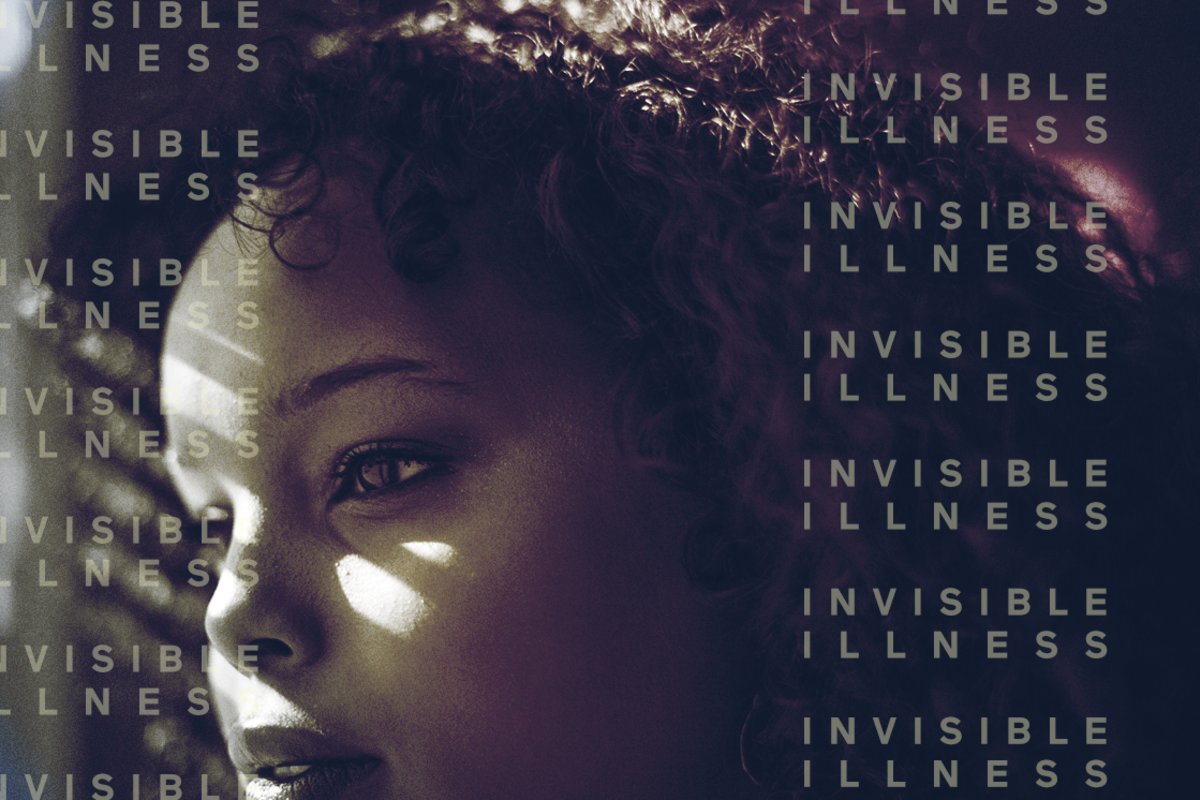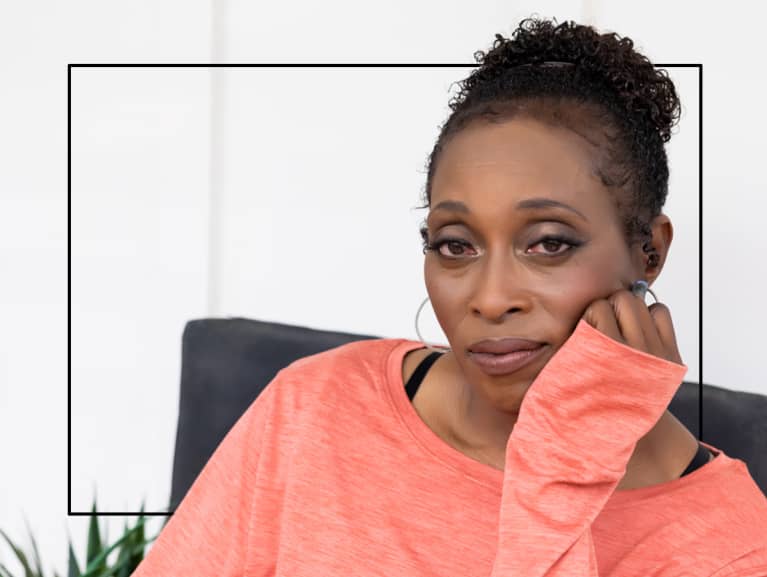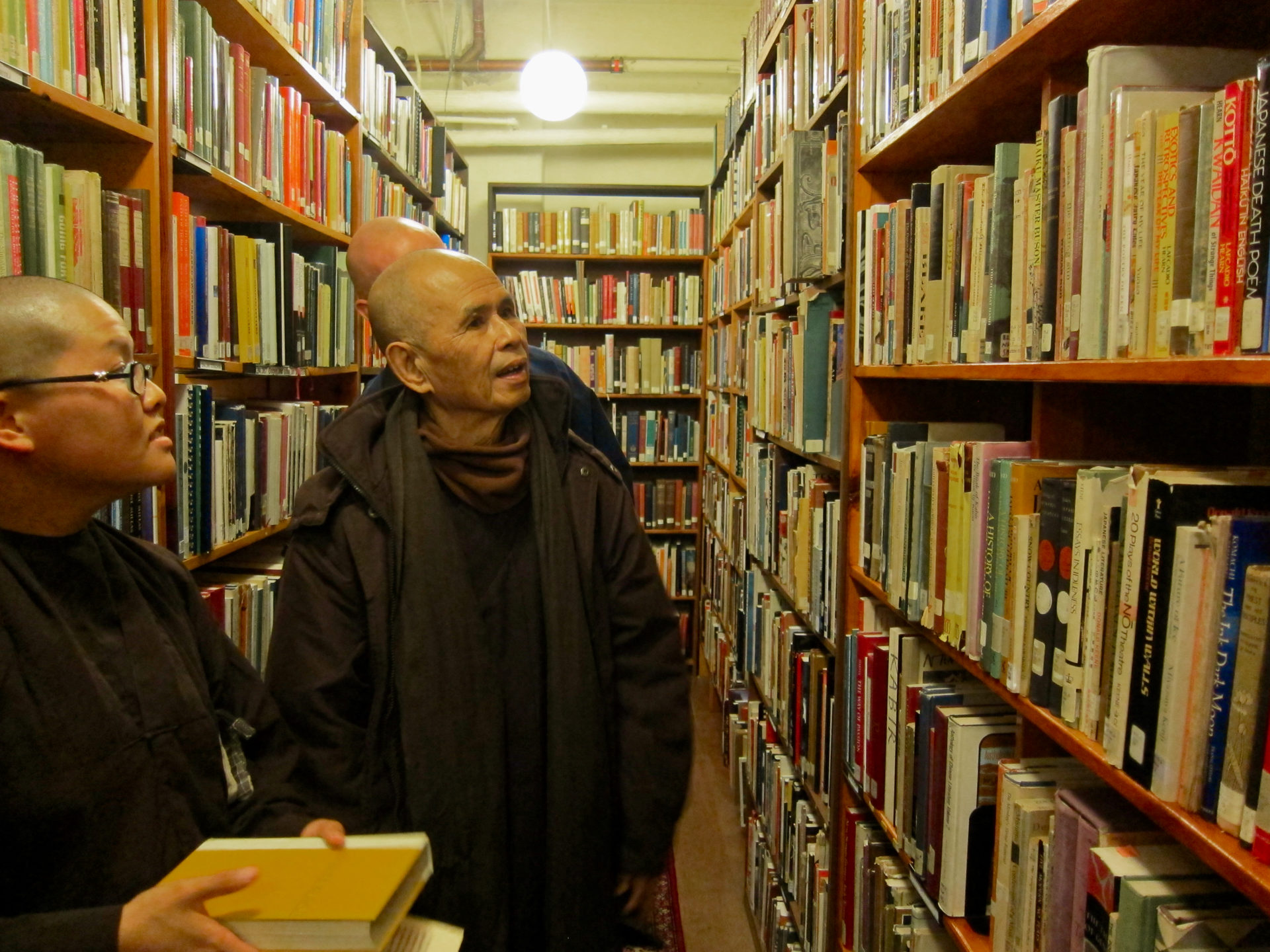I Lived With Uncomfortable Eye Symptoms For 30 Years—Then I Got This Diagnosis
Now, this Olympic track & field athlete is reclaiming her power.


September 10, 2022 — 11:33 AM
While some health issues are visible to the outside world, many people face chronic conditions that don't have externally visible signs or symptoms—also known as invisible illnesses. In mindbodygreen's series, we're giving individuals with invisible illnesses a platform to share their personal experiences. Our hope is their stories will shed light on these conditions and offer solidarity to others facing similar situations.
I'm a sprinter. I'm supposed to get to the finish line quick and fast. And yet I took the marathon route to a diagnosis. So here I am, decades years later, finally with some answers and a story to share.
I started experiencing symptoms I couldn’t explain.
It all goes back 30 years. Just as my career was taking off as an Olympic track & field athlete, I knew something was wrong in my body. I started rapidly losing weight. I was always tired, but I couldn’t sleep. When I did sleep, my eyes didn’t close, because they were bulging, painful, and irritated.
This went on for almost three years. I went back and forth to doctors, trying to figure out what was going on. My running performance started to feel off, too, and that’s when I really knew something was up. But the doctors told me there was nothing wrong, and it made me feel like I was crazy.
I got answers…but it was only the beginning.
At that point, I started just picking names of doctors out of provider books, desperate to find someone who would know what was happening. Then finally, in 1990, I was diagnosed with Graves' disease, which is an autoimmune disorder, and it causes hyperthyroidism. That was the cause of so many of my symptoms, and I was so grateful to finally have some answers.
Two and a half years later, I won my first Olympic gold medal. And I thought, ‘hey, I'm starting to get my life back on track.’ But, unfortunately, that wasn't the case.
My Graves' disease was under control, but the eye issues continued—bulging, pain, redness, grainy vision. I remember asking other people on the track if the hurdles were blurry to them, because they were always so blurry to me. I describe it as looking through fascia, that’s how distorted my vision was.
But I thought: Who am I to complain? I got my life back. I am very fortunate to have gone to five Olympic Games and win medals. So even when my eye symptoms didn't clear up or get any better (and at times even got worse) I thought: This must just be my new state of normal, and I just have to deal with it.
After almost 30 years, I finally got my true diagnosis.
So I figured out how to navigate it, and not mention anything to anyone. For instance, I didn’t even tell my husband that I could barely see while I was driving at night, because the headlights of oncoming cars felt blinding to me and I had to really concentrate to stay in my lane. If we were going on a trip, I’d offer to drive during the day, and ask him to drive at night.
It got so bad, I started doing my own research on the internet, and I came across a survey about eye problems. I answered all the questions, and then at the end, the survey asked if I’d like to find a specialist in my neighborhood.
So I made an appointment, and the specialist told me I had TED. My first thought was: Who is Ted and why has he been living with me for 30 years? Then I learned TED stands for thyroid eye disease, a separate but related condition to Graves' disease. As it turns out, TED needs to be treated by a separate eye specialist, like an oculoplastic surgeon or a neuro-ophthalmologist. So after a wild, frustrating journey, I finally had my full diagnosis.
How I let go of anger at my illness.
A chronic condition is something that you have for your lifetime, and it wears on you. Those symptoms have such a profound effect on your self confidence. I remember at times when I was experiencing my symptoms, I covered up the mirrors in my home. I couldn't stand the person that was looking back at me—yet doctors were telling me everything was normal.
I've always liked to write. So after I learned “Ted” had been living with me for 30 years, as an unwanted guest, I decided to write him a letter. It was very liberating, and it made me feel like I was regaining control. I really laid into him in this letter, telling him that he's got to go.
Let’s be sprinters and help others get to their diagnosis finish line first.
Since I found such power in that writing exercise, I’ve joined the ‘Dear TED’ letter writing campaign to encourage other people living with TED to do the same. Now, anyone can go to DearTedLetters.com to post letters, words of wisdom, and to tell TED directly how they are taking back their power and reclaiming control of their health. By forming a community of people who are going through the same experience, we can lean on each other, and on the really tough days, make it through.
My advice to anyone else in this position.
I always tell people, you know your body best, probably better than the doctor you see maybe once or twice a year. So if you feel something is off, you have to say something.
I also want people to know that if you have Graves' disease, it's very important for you to focus on your eye health. The stats tell us that up to 50% of people who have Graves Disease may develop TED.
What makes it challenging is the doctor who specializes in overseeing your Graves' disease is not the doctor trained to oversee your thyroid eye disease. The doctor treating your Graves’ may not even know about TED, because while Graves’ and TED are related, they're separate—and they need to be treated separately by different specialists. Had I known 30 years ago, what I know now, I would have rushed to a TED specialist at the first sign of my eye symptoms.
Ultimately, we need to become advocates for our own health. And remember, you are not alone. There are other people who have gone through what you’re going through. That’s why creating a community to share our experiences is so important in helping others. By sharing our journeys, we can help others avoid taking the marathon route. Let’s be sprinters and help others get to their diagnosis finish line first.
Where I’m going from here.
When I competed in track & field, I had a great team of coaches, a nutritionist, and my masseuse who were all there to help me perform at my best. After my Graves' diagnosis, my doctor and endocrinologist became an important part of that picture. Thirty years later I added my TED Eye Specialists—and now I finally have my complete care team.
With this strong team supporting me, I can set goals for what I want to do, and then actually have the energy to follow through—because my care team has taken great care of me. Now, my life is back in my hands.
I want to be the author of this next chapter in my life. By having the tools I need, I can finally do just that. That’s exactly why I want to make sure people everywhere know the risks, know the signs and symptoms of TED, and know where to seek the medical care they need. Through my work with the ‘Dear TED’ campaign, and by sharing my story, I hope to help as many people as I can get back on track.
Reset Your Gut
Sign up for our FREE doctor-approved gut health guide featuring shopping lists, recipes, and tips
You are now subscribed
Be on the lookout for a welcome email in your inbox!
https://www.mindbodygreen.com/articles/gail-devers-invisible-illness-thyroid-eye-disease

 Astrong
Astrong 




























![Are You Still Optimizing for Rankings? AI Search May Not Care. [Webinar] via @sejournal, @hethr_campbell](https://www.searchenginejournal.com/wp-content/uploads/2025/06/1-1-307.png)



